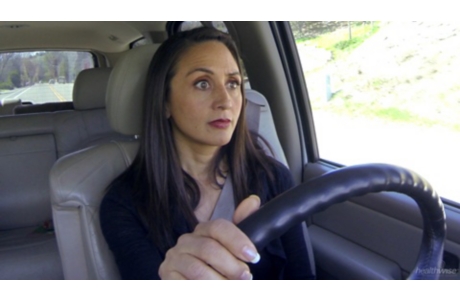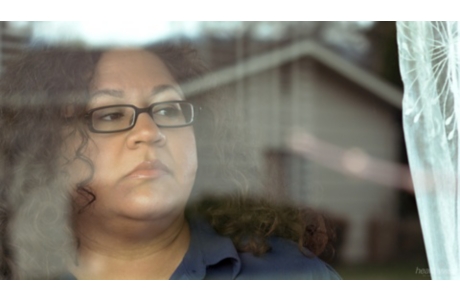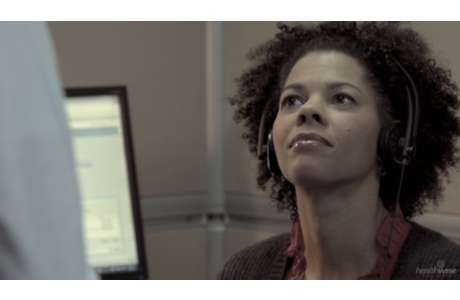Social Anxiety Disorder
Topic Overview
What is social anxiety disorder?
People with social anxiety disorder (or social phobia) are extremely anxious about what they will say or do in front of other people. This includes public speaking and day-to-day social situations. But it is more than just being shy or nervous before public speaking. The fear can begin weeks or months before an event. It can cause a fast heartbeat and make it hard to focus.
Some people fear only one or a few types of social situations. For other people, many situations cause stress. This problem affects your daily life. You may be so stressed or afraid that you avoid public situations, including missing work and school.
What causes social anxiety disorder?
Doctors don’t know what causes social anxiety disorder. They think it may run in families. But they are not sure if it’s because of genetics or a response to a traumatic situation.
What are the symptoms?
Social anxiety disorder causes both emotional and physical symptoms.
- It can make you nervous, sad, or easily upset before or during a social event. You may worry a lot or be afraid that something bad will happen.
- The anxiety can cause you to blush, sweat, and feel shaky. Your heart may beat faster than normal, and you may have a hard time focusing.
How is social anxiety disorder diagnosed?
To diagnose social anxiety disorder, your doctor will examine you and ask about your symptoms. He or she may ask other questions to see how you are doing emotionally. This is called a mental health assessment.
Your doctor may also do blood or urine tests to rule out other conditions, such as thyroid problems that can cause similar symptoms.
How is it treated?
Treatment of social anxiety disorder includes counseling, such as cognitive-behavioral therapy, and sometimes medicine, such as antidepressants. Whether you need medicine depends on how much the problem affects your daily life. If you already feel anxious around other people, it may be hard to ask for help. But treatment for social anxiety disorder works for many people.
Some people with social anxiety disorder turn to alcohol or drugs to help them relax. This can lead to substance use disorder. They may also have depression. It is important to treat these issues too.
Health Tools
Health Tools help you make wise health decisions or take action to improve your health.
- Anxiety: Stop Negative Thoughts
- Stop Negative Thoughts: Getting Started
- Stress Management: Breathing Exercises for Relaxation
- Stress Management: Doing Guided Imagery to Relax
- Stress Management: Doing Meditation
- Stress Management: Doing Progressive Muscle Relaxation
- Stress Management: Relaxing Your Mind and Body
Symptoms
Social anxiety disorder causes unreasonable, debilitating fear of being judged or publicly humiliated. You may avoid or severely limit encounters with other people—which can keep you from daily activities. You may develop physical symptoms such as a rapid heartbeat, shortness of breath, or tightness in your chest when faced with a feared social situation.
When you have social anxiety disorder, common social situations—such as eating in public, writing in front of other people, using a public restroom, or speaking in front of others—can cause overwhelming fear and anxiety.
You may be more afraid of people noticing your anxiety than of the actual feared situation. A vicious cycle can emerge of avoiding or worrying about the social event (such as speaking in public) because you are afraid others will see you as weak, anxious, or foolish—this, in turn, leads to more anxiety. This may lead to avoiding or limiting contact with other people.
Symptoms of social anxiety disorder may differ in adults and children. Adults and teenagers with social anxiety disorder usually recognize their fears of being publicly humiliated are unreasonable or excessive. But children who have this disorder may not.
People with social anxiety disorder often underachieve at work or at school to avoid the attention of a promotion or to avoid being forced to participate in a group. They tend to have few friendships and have trouble dating or developing relationships. In prolonged or severe cases, many people develop other psychological conditions (such as depression or substance use disorder).
Social anxiety disorder is among several types of phobias that many people experience, such as agoraphobia or a specific phobia (fearing an object, like a spider, or a frightening situation, such as being stuck in an elevator).
Exams and Tests
Social anxiety disorder is diagnosed based on your medical history, physical exam, and sometimes a mental health assessment, which is an evaluation of psychological symptoms. You may be asked to answer questions about your anxiety and what makes it better or worse.
Blood or urine tests may also be done to rule out other medical conditions that can cause similar symptoms (such as hyperthyroidism).
Treatment Overview
Treatment for social anxiety disorder involves psychological counseling (such as cognitive-behavioral therapy) and sometimes medicines (such as antidepressants) to reduce related anxiety and depression.
Unfortunately, many people don’t seek treatment for anxiety disorders. You may not seek treatment because you think the symptoms are not bad enough or that you can work things out on your own. But getting treatment is important.
How do I know if I have an anxiety disorder that needs treatment?( What is a PDF document? )
If you need help deciding whether to see your doctor, see some reasons why people don’t get help and read about how to overcome them.
Initial and ongoing treatment
Initial treatment of social anxiety disorder is based on how bad your emotional and physical symptoms are and how able you are to function in daily activities. People who have social anxiety disorder often have depression also. They may also have substance use disorder. Your doctor may ask you certain questions to see whether you might be drinking too much or using drugs.
Social anxiety disorder often goes undetected for years before treatment is sought. By that time, you may have developed behaviors that accommodate the fears. These habits or behaviors must be overcome to successfully manage social anxiety disorder.
First, your doctor must determine whether you are generally anxious about all social encounters or whether a specific situation triggers anxiety.
A particular type of psychological counseling, cognitive-behavioral therapy (CBT), has been shown to help treat social anxiety disorder. Often your doctor will recommend counseling first and then add medicine if needed. But your treatment plan will depend on what you and your doctor decide is best for you.
Counseling
It is possible to overcome the fears linked with social anxiety disorder. Working through fears with a specific type of therapy—cognitive-behavioral therapy that includes exposure therapy—may be the best approach for treating your anxiety. It is important to continue professional counseling even if you are taking medicines to reduce anxiety.
Types of counseling most often used to treat social anxiety disorder include:
- Cognitive-behavioral therapy, which helps you identify anxieties and the situations that provoke the anxiety. At first you may feel uncomfortable while addressing the feared situations, but it is an important part of your recovery. Several types of cognitive-behavioral therapy are used to treat social anxiety disorder, including:
- Exposure therapy. You will be guided by a professional counselor to imagine you are facing the feared situation until you no longer fear it, such as eating in public. Next, you may go with your counselor to a public place and eat until, eventually, you can eat by yourself in public without fear.
- Social skills training. This therapy helps you develop the skills you need in social situations through rehearsing and role-playing. Your anxiety is reduced as you become more comfortable with and prepared for the feared social situations.
- Cognitive restructuring. This therapy helps you learn to identify and improve fearful thinking to help you better handle social situations.
- Symptom management skills. This therapy teaches you how to reduce stress by controlling your breathing and other physical responses to anxiety.
- Psychodynamic therapy, which has been specifically developed to treat social anxiety disorder. There is not as much support for this treatment as there is for CBT and medicines.
Medicines
Medicines often used for chronic, severe, or generalized social anxiety disorder include:
- Antidepressants, to help relieve anxiety and depression.
- Monoamine oxidase inhibitors (MAOIs), to relieve depression and anxiety. MAOIs have potentially serious side effects when they are taken with certain foods (such as some cheeses and red wine).
- Benzodiazepines, to relieve anxiety. They are fast-acting. But they may be habit-forming and are not generally used in those who have substance use disorder.
- Beta-blockers, to reduce anxiety. Beta-blockers are sometimes used to treat physical symptoms of anxiety (such as tremors or rapid heart rate).
Ongoing treatment of social anxiety disorder usually includes continuing psychological counseling and regular checkups to monitor any medicines you may be taking. If professional counseling alone has not reduced your anxiety symptoms, medicines may be added to your treatment.
If your anxiety is triggered by many social situations (generalized), you may need continuous and prolonged treatment with a combination of counseling and medicines. During this time, your doctor will need to monitor your medicines. If one medicine doesn’t work for you, you and your doctor may decide you should try another.
Treatment if the condition gets worse
With social anxiety disorder, it is possible to progress from debilitating fear of one social situation to having anxiety about all social encounters (generalized). If this occurs, additional treatment is needed that usually includes adding medicines and increasing the amount of professional counseling you receive.
You may also feel more anxious when you start professional counseling. This is because you are thinking about the situations that cause you fear and anxiety. After the situations have been identified, the fears can be addressed through counseling—especially cognitive-behavioral therapy which includes exposure therapy—gradually exposing you to your fear.
If you are taking medicines to treat social anxiety disorder, you will need regular checkups to monitor the medicines and their potential side effects. The medicines may cause bothersome side effects that may make your anxiety worse at first. These side effects may get better over time. But if they do not, you may need to take a different medicine.
If social anxiety disorder is left untreated or improperly treated, it can cause debilitating distress that interferes with daily activities. Physical symptoms such as rapid heart rate, blushing, shortness of breath, and dizziness can occur and need to be assessed.
Home Treatment
While counseling and medicines are the most effective treatments for social anxiety disorder, you may wish to reduce your anxiety level at home by practicing a healthy lifestyle.
- Get regular exercise. Start slowly so that you don’t overdo it. Build up your exercise program bit by bit, and aim for at least 2½ hours a week of moderate exercise. It’s fine to be active in blocks of 10 minutes or more throughout your day and week.footnote 1
- Get enough sleep by going to bed at nearly the same time every night. Also, keep your room quiet and dark. This may reduce distractions and may help you get a good night’s rest.
- Eat a balanced diet by choosing foods low in fat and high in fiber.
- Avoid foods and beverages that contain caffeine, such as chocolate and coffee, since they may increase your anxiety.
- Try some relaxation exercises. Certain breathing exercises and muscle relaxation exercises help reduce anxiety.
- Change how you think. Positive thinking can change how you feel and can reduce your anxiety.
If you drink alcohol or use drugs in an attempt to gain confidence to face feared social situations, it is possible to develop substance use disorder in addition to social anxiety disorder.
For more information, see:
References
Citations
- U.S. Department of Health and Human Services (2008). 2008 Physical Activity Guidelines for Americans (ODPHP Publication No. U0036). Washington, DC: U.S. Government Printing Office. Available online: http://www.health.gov/paguidelines/guidelines/default.aspx.
Other Works Consulted
- Merikangas Kr, Kalaydjian AE (2009). Epidemiology of anxiety disorders. In BJ Sadock et al., eds., Kaplan and Sadock’s Comprehensive Textbook of Psychiatry, 9th ed., vol. 1, pp. 1856–1864. Philadelphia: Lippincott Williams and Wilkins.
- National Institute for Health and Clinical Excellence (2013). Social Anxiety Disorder: Recognition, Assessment, and Treatment. London: National Institute for Health & Clinical Excellence (NICE). Available online: http://publications.nice.org.uk/social-anxiety-disorder-recognition-assessment-and-treatment-cg159.
Current as of: May 28, 2019
Author: Healthwise Staff
Medical Review:Kathleen Romito MD – Family Medicine & Elizabeth T. Russo MD – Internal Medicine & Christine R. Maldonado PhD – Behavioral Health
This information does not replace the advice of a doctor. Healthwise, Incorporated, disclaims any warranty or liability for your use of this information. Your use of this information means that you agree to the Terms of Use. Learn how we develop our content.






